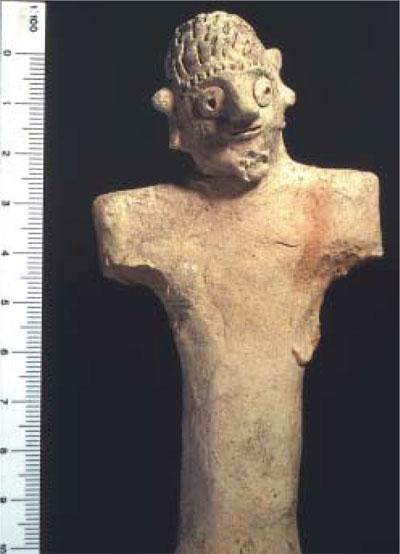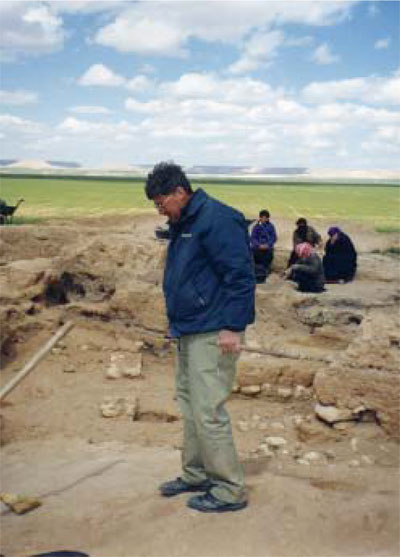
Ancient Mesopotamia is Richard Zettler’s research passions. As Associate Curator-in-Charge of the Near East Section, and Associate Professor of Anthropologic, his expertise has made him the person to contact about the Near East, especially in light of recent events in Iraq. Some of you will have read his editorial, “Thieves of History,” in the Philadelphia Inquirer, June 17, 2003; others will recognize Zettler from his role as co-curator in the traveling exhibition, “Treasures from the Royal Tombs of Ur.” How did his interests develop into a devotion to Mesopotamia?
As a Notre Dame undergraduate, Richard Zettler majored in historic, initially focusing on Latin America. While studying Roman and ancient Near Eastern history, he became hooked on ancient history, supplementing his studies with courses on Hebrew in the Theology Department. For graduate school, Zettler chose the University of Chicago, where he received the Ida Noyes Fellowship and pursued his studies in the Near Eastern Language and Civilizations department at the Oriental Institute. After finishing his Ph.D., he briefly taught at the University of California, Berkeley, and in 1986 accepted a position at the University of Pennsylvania.


In one of the odd twists of fate in the small world of archaeology, Zettler’s first visit to the Middle East in 1974 took him to the Syrian site that is the main focus of his research today. His adventures during that trip included driving a car from Beirut through the Beka’a Valley, Lebanon, and on to Homs, the Syrian city near the Crusader castle, Krak des Chevaliers.
Typical of many visitors to the Middle East, Zettler loved it from the moment he arrived, despite inevitable bouts of illness. In 1975, he went to Nippur in Iraq. This journey was quite memorable: he accompanied a car from the United States on a Yugoslav freighter to Casablanca and then on to Naples. Here, he disembarked, and then drove to Baghdad via Istanbul, Aleppo, and Damascus. A car loaded with field supplies is a tempting target, and, in Istanbul, someone stole a camera, a trench coat, and a suitcase full of Nivea!
In recent years, Richard Zettler has concentrated on the 3rd millennium, Bronze Age site of Tell es-Sweyhat in Syria. In the 1970s, he rode donkeys to the site, but nowadays, the glamour of donkeys has been replaced by mundane vehicles. In 1989, constructing a toilet and shower facility was a bit of a surprise. With a small budget, and expecting a simple set-up, he returned to find a small cinderblock house, with a slab and deep pit, which cost him 25% of that year’s field funds. On the current creature comforts front, his local cooks include one who makes French toast, American style donuts, and Crépes Suzettes! (See Expedition 44(3): 7–8 for culinary details.)
Zettler’s work at Tell es-Sweyhat revealed that large mudbrick platforms and fortifications characterized the settlement at the same time that Ebla, to the east, flourished. Over time, Tell es-Sweyhat grew to include a citadel and a large surrounding lower town, marking its importance as an extensive fortified urban center. One of the exciting recent discoveries was the tombs discovered when irrigation water caused sediment slumping that opened up deep holes across one sector of the site. These shaft tombs contain multiple burials, with older burials unceremoniously shoved aside to make room for the new. Grave goods can include clay vessels and animals such as a piglet, or, in one case, a sheep’s head with bird eggs inset as its eyes.
Richard Zettler and his crew were working at Tell es-Sweyhat on September 11, 2001, and after hearing Arabic newscasts locally, decided to shut down the season. Since then, events in nearby Iraq have precluded fieldwork, but he is now focusing on returning in spring 2004 to continue excavations on the site’s fortifications.
DEBORAH I. OLSZEWSKI is a lecturer in the University of Pennsylvania’s anthropology department and a Research Associate at the Museum.
